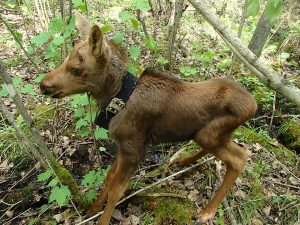
The number of moose living in Quetico Provincial Park has increased by about 10 percent in the past five years. More importantly, there were twice as many calves last year, reported the Atikokan Progress.
The new findings appear to be good news for the animals, which have seen major population declines in northern Minnesota. But the population count is still well below historic numbers, which were about 2,000 to 2,5000 until the 1990s.
The same problems that have been blamed for Minnesota’s moose are also affecting the animals in Ontario.
As winters in the region have become warmer in recent decades, more whitetail deer and more ticks have hurt moose numbers. The deer spread a brain worm to moose which is harmless to the deer but can kill a moose. Ticks are one of the biggest stressors to moose during the winter, with animals carrying as many as 80,000 deer ticks observed in Quetico in late winter.
More deer also stimulate wolf populations, which in turn prey on moose calves, making it harder to increase the numbers of adult animals.
A couple cold winters are seen as the reason for the Quetico rebound.
“The winters of 2013 and 2014 were very cold, with heavy snow. That meant fewer ticks and fewer deer – both of which are good for moose,” Quetico Park naturalist Susan Bourne said.
Ontario has been partnering with the state of Minnesota to study moose mortality. Six moose have been given tracking collars, allowing researchers to study their habits and their causes of death.
Read the full article in the Atikokan Progress.

